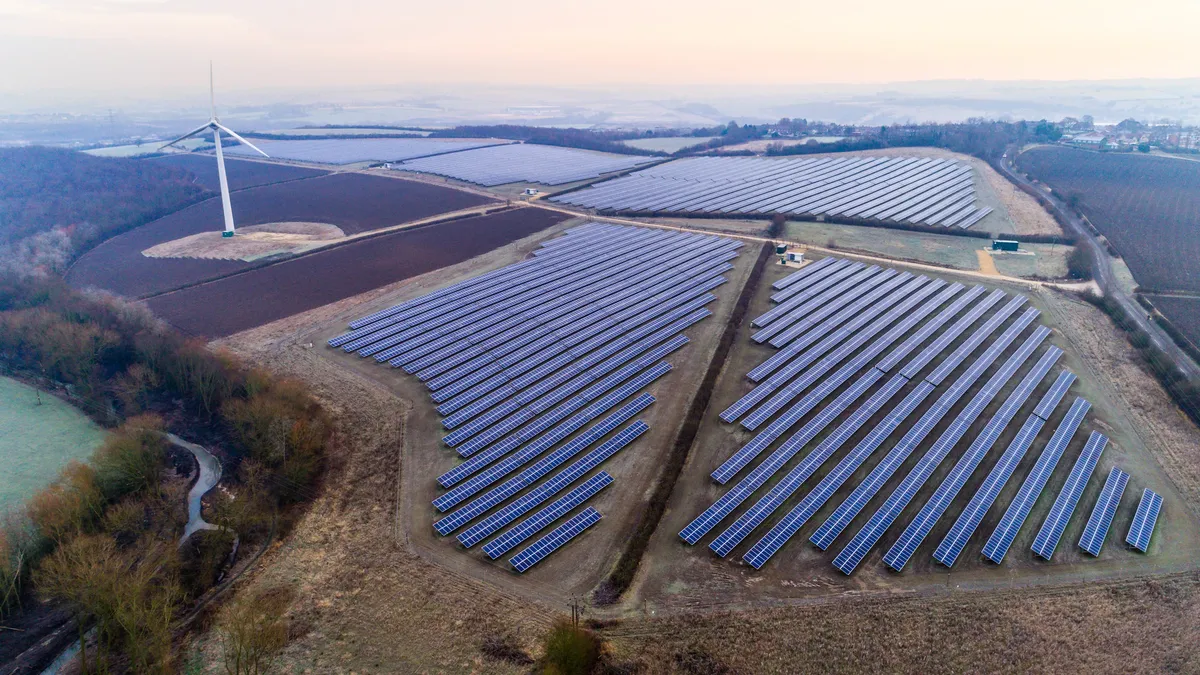The Federal Energy Regulatory Commission’s generator interconnection reform rule issued last week will likely improve the bogged down procedure, but may do little to speed up the process across broad swaths of the country, according to lawyers and industry experts.
The central reform in FERC’s Order 2023 rule is a requirement that transmission providers adopt a first-ready, first-served cluster study process to weed out speculative projects in interconnection queues, Stephen Hug, a partner with the law firm Akin Gump Strauss Hauer & Feld, said during a webinar Thursday.
However, it is unlikely the new rule will speed the interconnection process in regions that already study interconnection requests in clusters, Hug said.
Grid operators and transmission providers that study interconnection requests in groups, instead of one-by-one, include the California Independent System Operator, the Midcontinent Independent System Operator, the New York Independent System Operator, the PJM Interconnection, the Southwest Power Pool, NV Energy, PacifiCorp and Public Service Co. of Colorado.
Interconnection queues around the country grew 40% in 2022 compared with the year before, with more than 10,000 projects — representing 1,350 GW of generation and 680 GW of storage — waiting for approval to connect to the grid, the Lawrence Berkeley National Laboratory said in an April report. The vast majority of the planned projects are solar, storage or wind.
With FERC’s encouragement, transmission providers that use the cluster study approach are looking beyond the agency’s final rule, according to Hug. “They acknowledge ... even … a cluster study process that includes readiness requirements, site control requirements, is not sufficient to meet the current demands that are being placed on the queue,” he said.
More changes needed
Order 2023 is “an important step in the right direction,” but more changes are needed to address interconnection challenges, according to RMI, a non-profit group focused on reducing greenhouse gas emissions from the energy sector.
Most regional transmission organizations already use a cluster study approach, yet they are experiencing long interconnection wait times, RMI analysts said Wednesday in a blog post.
The root causes of interconnection delays include a U.S. transmission system that has little spare capacity and that is largely built without consideration for planned generation and storage, the RMI analysts said.
“This leaves it up to the interconnection process to build the infrastructure needed to connect these new resources — an inefficient, piecemeal approach to grid expansion that places the financial burden on individual projects to build network upgrades that benefit the entire system,” they said.
Several FERC commissioners have said that the interconnection reform rule is a first step in broader efforts to improve the grid and bring generating and storage resources online, according to Ben Reiter, an Akin Gump counsel.
“If we really are going to connect the amount of renewable generation to meet state clean energy goals and the renewable generation that is now largely economical, thanks to the Inflation Reduction Act, we’ll really need holistic transmission reform,” Reiter said during the webinar.
FERC is working to release a rule reforming transmission planning and cost allocation in the “coming months,” the agency’s Acting Chairman Willie Phillips said last week.
Reform seen as ‘evolutionary improvement’
FERC’s interconnection reforms could resolve some of the planning challenges the electricity sector faces in handling the rapid growth of utility-scale renewable energy deployment, ClearView Energy Partners said in a note Thursday.
Generally, the final rule, compared to FERC’s proposal, eased requirements on transmission providers and increased regulatory hurdles for interconnection customers, according to the research firm.
The final rule, for example, requires interconnection customers to pay a single upfront deposit to enter an interconnection study instead of several payments through the study process, a change that could strain project developers financially, ClearView said.
ClearView expects that during a transition period to the new rule, many proposed projects will likely remain in existing interconnection queues. FERC’s reforms are a “significant evolutionary improvement,” but not a revolutionary one, ClearView said.
Order 2023 will likely have major effects on the interconnection process, but its impacts will not be fully known until multiple cluster-based processes are completed, Vinson & Elkins attorneys said Monday in a blog post.
The rule will produce winners and losers, according to the attorneys. Interconnection customers that would otherwise languish in the queue will be able to proceed through the process faster, but some customers may find that continuing through the process is cost-prohibitive, they said.
Rehearing requests on the interconnection reform rule are due 30 days after it is published in the Federal Register. Transmission providers have 90 days after it is published to file their compliance plans at FERC.






















